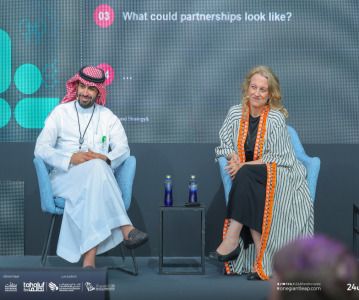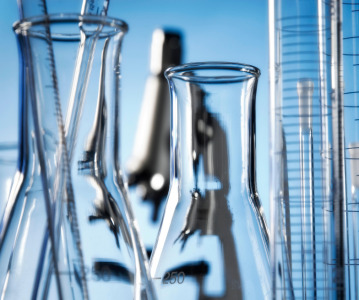Major players in type 2 diabetes shifting focus to pricing to maintain market share

With cost pressures burdening many health systems, competitive pricing is a strategy that other companies are likely to adopt with me-too drugs in late-stage development, says GlobalData.
The highly mature type 2 diabetes (T2D) market, which is forecast to be valued at $58.7 billion by 2025, will see pharmaceutical companies prioritizing competitive pricing in order to offset the impact of patent expiries ahead of improving existing products, says research and consulting firm GlobalData.
According to the company’s report — PharmaPoint: Type 2 Diabetes – Global Drug Forecast and Market Analysis to 2025 — human insulins and many insulin analogs are currently off patent or will soon lose their patents. The patents for Humulin and Novolin expired in 2001 and 2002, respectively. More recent patent losses include Eli Lill’ys Humalog (insulin lispro) in 2013, Novo Nordisk’s NovoLog/NovoRapid (insulin aspart) in 2014, and Sanofi’s Lantus (insulin glargine) in 2014–2015. Lantus is already beginning to suffer erosion to the first to market insulin biosimilar, Eli Lilly’s Abasaglar (insulin glargine).
Jesus Cuaron, GlobalData’s Senior Analyst covering Cardiovascular and Metabolic Disorders, explains: “Sanofi, historically a major player in the T2D space, is a good example of a company which has turned its attention to price rather than therapeutic value as the late-stage pipeline becomes saturated with me-too drugs. The company’s recently marketed drug Lyxumia (lixisenatide) was launched at a heavy discount to rival glucagon-like peptide-1 receptor agonists (GLP-1RAs), AstraZeneca’s Byetta (exenatide) and Novo Nordisk’s Victoza (liraglutide).
“As Lyxumia is the fourth-to-market GLP-1RA product, with a low level of differentiation in the GLP-1RA space, Sanofi had to offer a competitive price in order to win market share. With health systems in many markets facing cost pressures today, this is likely a strategy that other companies will adopt with their me-too drugs that are in late-stage development.”
Although a waning factor, major players in the T2D market are also responding to the emergence of insulin biosimilars by offering improvements on existing therapies. Sanofi also recently launched Toujeo (insulin glargine, U300), a superior version of its own product Lantus, in addition to developing a fixed-dose combination of Lantus and its Lyxumia (lixisenatide) in order to protect its franchise.
Cuaron notes: “In addition to recently launched Toujeo, Sanofi is developing a biosimilar candidate of its own: SAR-342434. Currently in Phase III trials, SAR-342434 is an insulin lispro biosimilar to Eli Lilly’s Humalog.
“Overall, GlobalData believes that Novo Nordisk will maintain its lead in the insulin market by 2025, with its several marketed insulin analogs and ultra-rapid acting insulin, FIAsp (faster-acting insulin aspart), which is currently in Phase III trials.”
Related News
-
News Ophthalmologic drug product Eylea faces biosimilar threats after FDA approvals
Regeneron Pharmaceutical’s blockbuster ophthalmology drug Eylea is facing biosimilar competition as the US FDA approves Biocon’s Yesafili and Samsung Bioepis/Biogen’s Opuviz. -
News ONO Pharmaceutical expands oncology portfolio with acquisition of Deciphera
ONO Pharmaceutical, out of Japan, is in the process of acquiring cancer-therapy maker Deciphera Pharmaceuticals for US$2.4 billion. -
News First offers for pharma from Medicare drug price negotiations
Ten high-cost drugs from various pharma manufacturers are in pricing negotiations in a first-ever for the US Medicare program. President Biden’s administration stated they have responded to the first round of offers. -
News Eli Lilly’s Zepbound makes leaps and bounds in weight-loss drug market
In the last week, Eli Lilly has announced their partnership with Amazon.com’s pharmacy unit to deliver prescriptions of Zepbound. Zepbound has also surpassed Novo Nordisk’s Wegovy for the number of prescriptions for the week of March 8.&nbs... -
News Chasing new frontiers at LEAP – The National Biotechnology Strategy Keynote
On the third day of LEAP (4–7 March 2024, Riyadh Exhibition and Convention Centre, Malham, Saudi Arabia) the CPHI Middle East team hosted the Future Pharma Forum, to set the scene for an exciting new event for the pharma community, coming to Riya... -
News Pfizer maps out plans for developing new oncology therapeutics by 2030
Pfizer dilvulges plans to investors around growing their cancer portfolio, and the drugs they will be focusing on developing after their aquisition of Seagen in 2023. -
News Generics threat to Merck’s Bridion as Hikma seeks pre-patent expiry approval
Merck has disclosed they received notice from Hikma Pharmaceuticals for seeking a pre-patent expiry US FDA approval for Hikma’s generic version of Merck’s Bridion. -
News Bernie Sanders vs Big Pharma - the latest on drug price negotiations
In a hearing in front of the US Senate, three of the biggest pharmaceutical companies in America are challenged over exorbitant prescription drug prices, with Sanders claiming their actions are limiting the population's access to affordable healthc...
Position your company at the heart of the global Pharma industry with a CPHI Online membership
-
Your products and solutions visible to thousands of visitors within the largest Pharma marketplace
-
Generate high-quality, engaged leads for your business, all year round
-
Promote your business as the industry’s thought-leader by hosting your reports, brochures and videos within your profile
-
Your company’s profile boosted at all participating CPHI events
-
An easy-to-use platform with a detailed dashboard showing your leads and performance
.png)

.png)
.png)


.png)
.png)